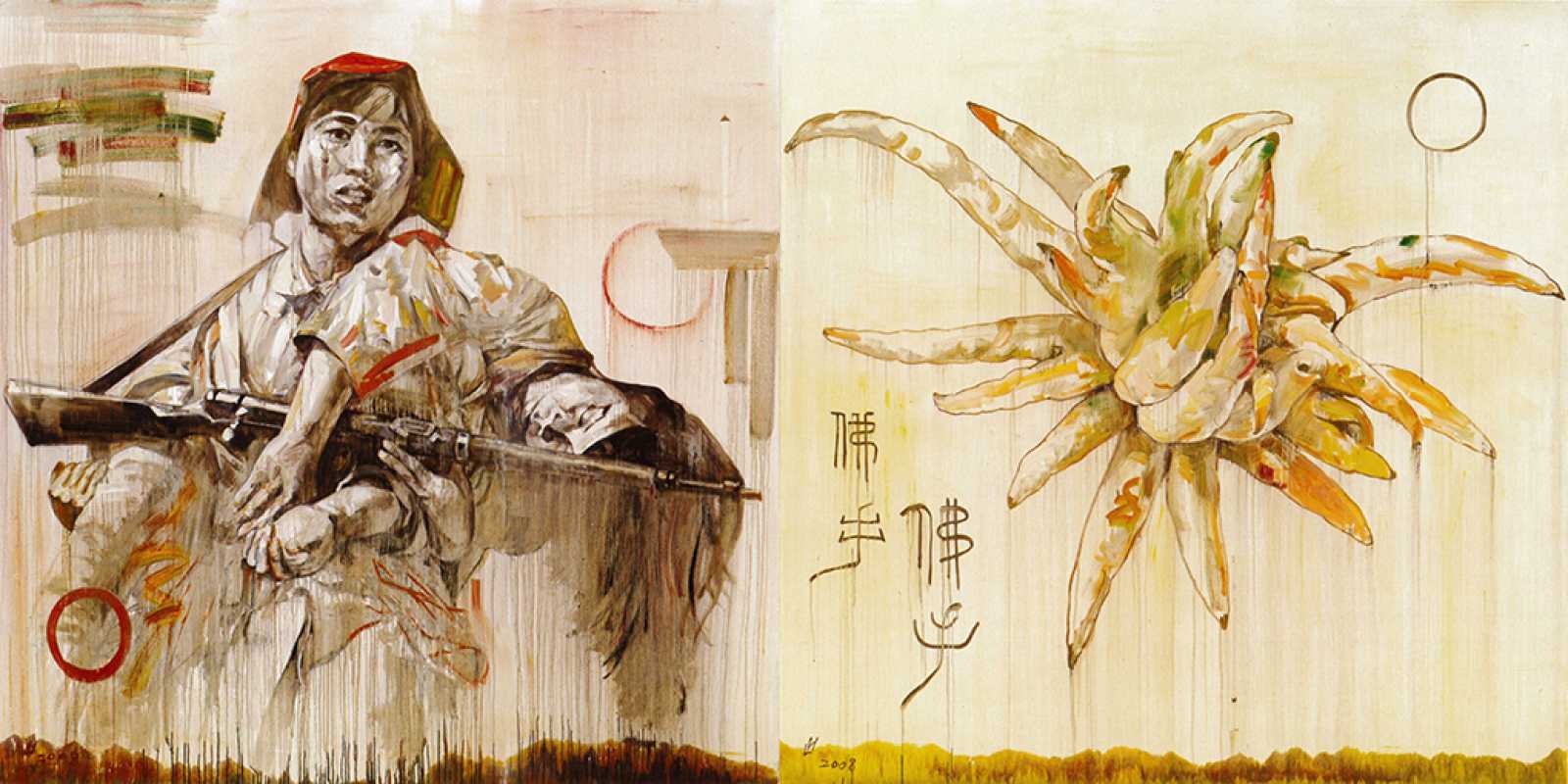Artwork of the Week
Hung Lui
This painting features many signature elements of Hung Liu’s style: painterly brushwork, dripping paint, multiple canvases, and attention to the figure within direct or implied narratives. This diptych is part of the artist’s “Daughters of China” series that depicts the events in which eight female soldiers fought the Japanese and died in 1938. On the left is a rendering of a still from a propaganda film about these soldiers that Liu remembers seeing as a child. On the right, she depicts the Asian citrus fruit known as “Buddha’s hand,” which is offered during the Chinese New Year to represent happiness, longevity, and good fortune.
Hung Liu was born in China in 1948, a year before Chinese Communist leader Mao Zedong came to power and created the People's Republic of China (PRC). Therefore, her sense of the world was forged by modern China’s historical events—overlaid by her time in the United States, beginning with her emigration in 1984 to study art at University of California, San Diego, where she received her MFA. She continues to live and work in California—currently in the Bay Area, where she is professor emerita at Mills College.
Hung Liu (American, born 1948), And the Last Fight Let Us Face, 2008, oil on canvas, 80 × 160 inches. Gift of Hung Liu and Jeff Kelley in honor of Dr. Steven and Carol Nash, 2015.27a-b.
Dan Namingha
Dan Namingha carries a strong Hopi-Tewa family heritage of artistic expression which has encouraged experimentation with traditional and modern art forms combining abstract and realistic elements. Desert Arch I, however, represents a new direction for Namingha. While the desert landscape of the Southwest is well represented in his paintings and collages, this is his first “landscape” sculpture. According to the artist, Desert Arch I is a tribute to the over 2000 natural sandstone formations that characterize the unique geological features of Arches National Park. The golden patina represents the color of the sandstone rock, yet Namingha has abstracted the natural forms to their basic abstract forms.
Namingha studied art at the American Academy of Art in Chicago where he was influenced by modernism, and at the Institute of American Indian Arts in Santa Fe where he received an Honorary Doctorate in 2009. His heritage has inspired his 40-year career and his exploration of connections between the physical and spirit world.
Dan Namingha, (Hopi-Tewa, born 1950), Desert Arch I, 2008, bronze, edition 2/5, 20 x 17 ½ x 11 inches. Gift of Loren G. Lipson, M.D., 36-2009.


